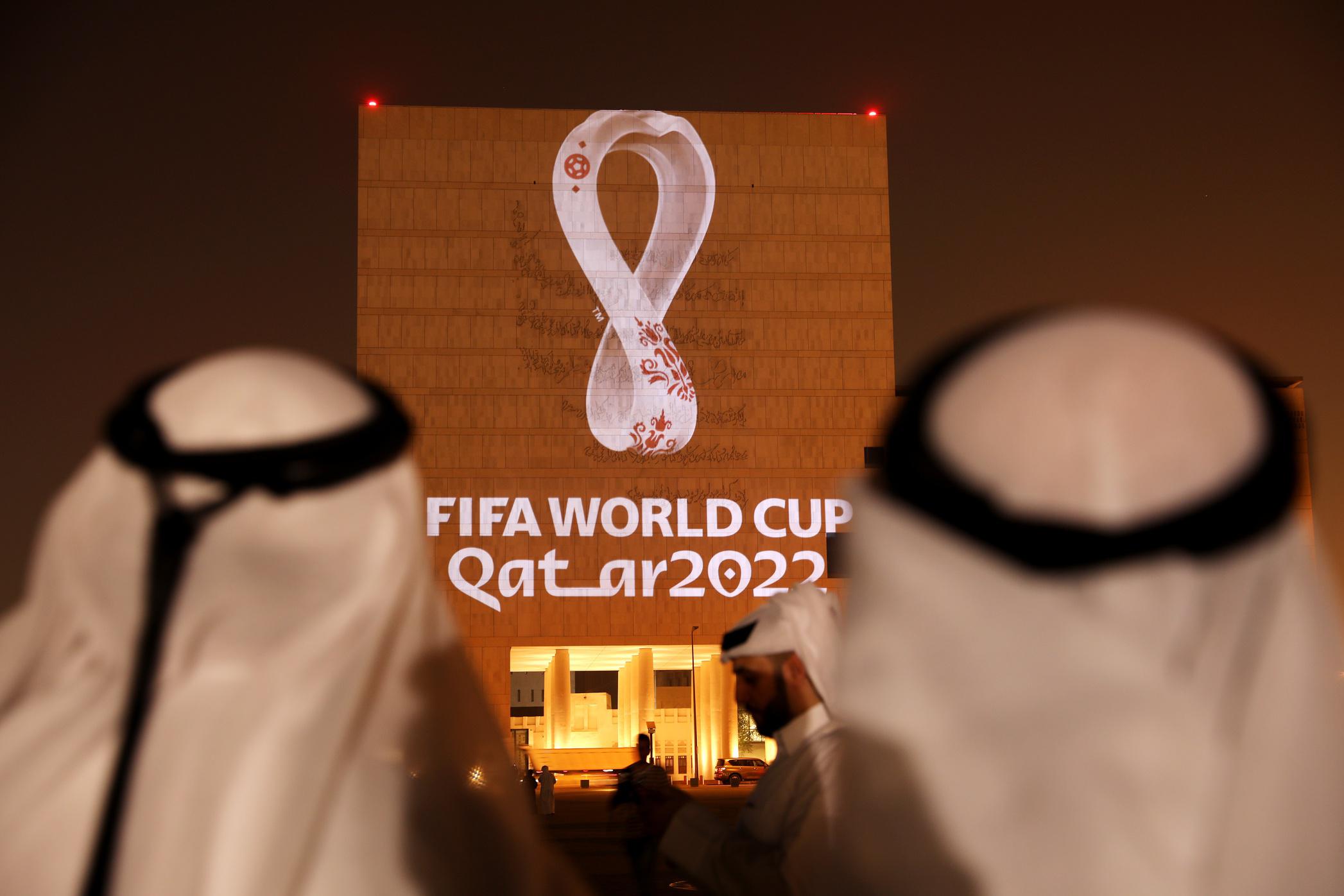DOHA, QATAR – SEPTEMBER 03: The Official Emblem of the FIFA World Cup Qatar 2022™️ is unveiled in Doha’s Souq Waqif on the Msheireb – Qatar National Archive Museum building on September 03, 2019 in Doha, Qatar. The FIFA World Cup Qatar 2022™️ Official Emblem was projected on to a number of iconic buildings in Qatar and across the Arab world and displayed on outdoor digital billboards in more than a dozen renowned public spaces major cities. (Photo by Christopher Pike/Getty Images for Supreme Committee 2022)
Upsets may be making the 2022 World Cup memorable, but they are running roughshod over values of non-fungible and fan tokens as the unexpected results dismay supporters of some of the top seeds.
Despite the excitement for each match, fan tokens have borne the brunt of unexpected losses and upsets. Price and trading volume for these tokens have decreased since the start of the tournament.
Fan tokens, created in partnership with official soccer federations and platforms like Socios and BitCi, are built on engage-to-earn access models that allow users to partake in in-app games and trivia that give them added access to the teams they support. Each team delineates how much power fans have over decision making, but the goal is largely to keep the crowds engaged and reward the most devoted.
In essence, fan tokens are like loyalty or reward tokens, or donation tiers, which provide added perks to those who pay the most. The Argentine Football Association Fan Token, which was the first major national soccer team NFT, was the biggest pre-play winner. With a current market capitalization of over $11 million, the token’s price peaked at $8.40 in the days before the World Cup, double its worth from a month before the cup ($4.40). The token’s price has since fallen to $2.74, even as the team makes its way to quarter-finals.
The Argentine token’s initial popularity may also be in part due to larger interest in cryptocurrencies and tokens within the South American nation. Spain, Portugal, Brazil, and Italy are among other countries whose national soccer federations have created their own fan tokens, since Argentina’s debuted last year.Fan tokens often fluctuate in price according to their team’s performance.
Interested in reading more? Subscribe to Forbes’ CryptoAsset and Blockchain Advisor.
Following a loss against Morocco in a surprising upset in Tuesday’s round-of-16 match, the token for Spains’ National team has suffered the most, losing 55% of its value. It peaked in September at 80 cents, according to data from CoinMarketCap, following the team’s defeat of Portugal in the 2022/2023 European Cup but has since dropped to 5 cents, according to CoinGecko.
Portugal’s fan token has also suffered from the team’s performance, despite the squad’s six goals against Switzerland to pass onto the quarter finals. The token peaked at $6.25 in the days before the start of the tournament, but has since fallen to $2.25
Collections of other kinds of soccer-related non-fungible tokens (NFTs), however, have weathered the price fluctuations driven by game results. Visa’s V collection, in partnership with Crypto.com, has garnered $10,900 in volume traded, with over 2,471 pieces minted. Prices range from $10 to $1 million for works featuring teams like England and Australia. The works, part of the Masters of Movement collection, are created from tracked movements of players in a short game of soccer at FIFA’s Fan Zone, an area allocated for attendees of the World Cup. These activity maps then create one-of-a-kind images for each game that are then minted as NFT.
To date, over 13,000 fans have attended Visa’s pop-up in the FIFA Fan Zone. Attendees have the choice of either receiving the images created from their match as digital files or minting them as NFTs.
Unlike the record-topping digital token sales of this year, many of which surpassed $1 million, these NFTs are selling for much less–$10 to $14 for one of Visa’s Masters of Movement lines. And they are doing so in fiat currencies, not crypto. The push comes largely from an attempt to bring the NFT and crypto ecosystem to a mass audience who may not be familiar with the technology.
“We’re bringing this kind of ecosystem to a much broader community through the FIFA World Cup,” says Andrea Fairchild, senior vice president of global sponsorships at Visa.
Some are going beyond the fiat payments and offering NFTs for free in an attempt to draw in the crypto-curious. A 10,000-piece collection by artist Bradley G. Munkowitz, known as GMUNK, in partnership with Coca-Cola KO and Crypto.com is raffling out NFTs following each match, requiring interested fans to merely sign up with an email address to be eligible for the draw.
“The crypto native audience definitely is excited because for them, it’s validation,” says Kalifowitz. But partner providers that are not familiar with crypto, he adds, “see the space and they see the potential.”
Collectibles have been part of the World Cup since the start, with brands creating special edition jerseys, cups and the famous albums of play stickers from collectibles marketer Panini. In the weeks before the tournament, a number of World Cup sponsors announced their foray into NFTs, creating collections of unique items recorded on a blockchain for an expected 5 billion viewers.
“It goes with what is core to the World Cup, which is memorabilia,” says Steven Kalifowitz, chief marketing officer at Crypto.com, of his company’s sponsorship. Crypto.com joined as the exclusive cryptocurrency trading platform sponsor of the 2022 World Cup in March and is hosting a number of NFT collaborations.
Author
Administraroot


